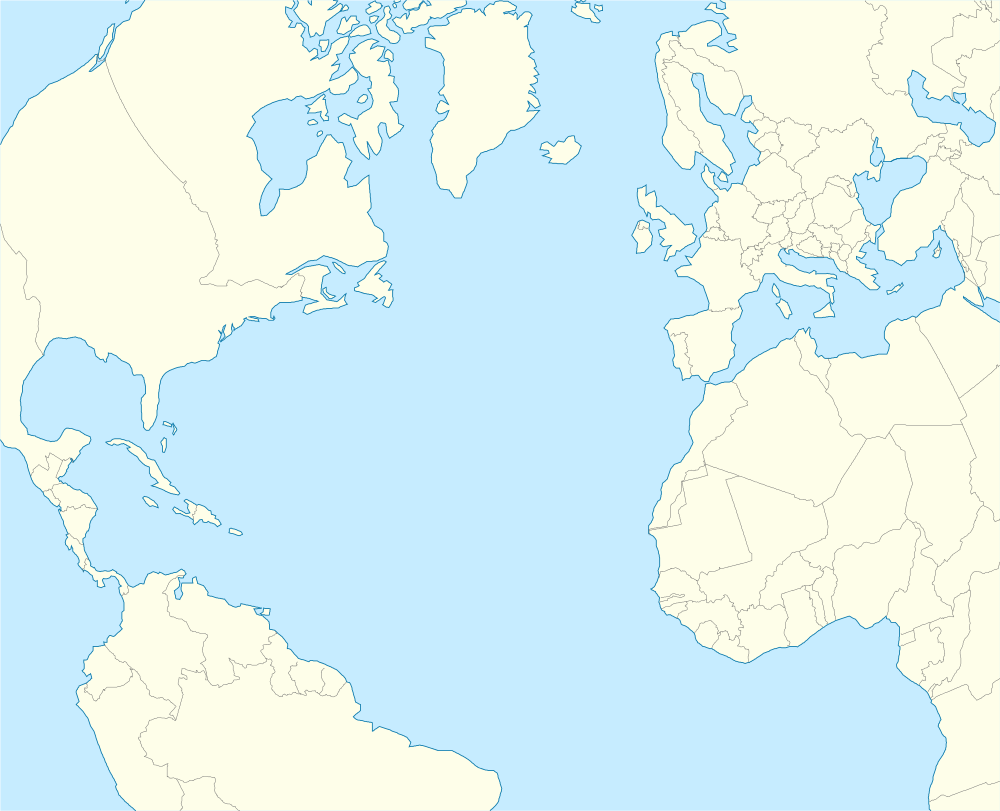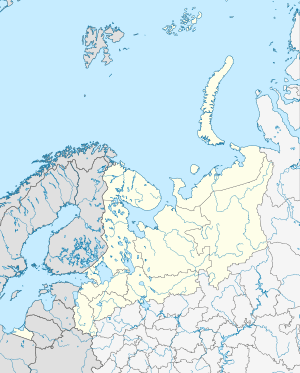List of sunken nuclear submarines
A total of nine nuclear submarines have sunk as a consequence of either accident or extensive damage. The United States Navy (USN) has lost two boats while five were lost in the Soviet Navy (one of which sank twice), and two from the Russian Navy. Only three were lost with all hands: the two from the United States Navy (129 and 99 lives lost) and one from the Russian Navy (118 lives lost), accounting for the three largest losses of life in a submarine. All sank as a result of accident except for K-27, which was scuttled in the Kara Sea when proper decommissioning was considered too expensive. The Soviet submarine K-129 carried nuclear ballistic missiles when it was lost with all hands, but as it was a diesel-electric submarine, it is not included in the list.
The two USN submarines belonged to Submarine Force Atlantic, in the U.S. Atlantic Fleet. All five of the Soviet/Russian nuclear submarines that remain sunken belonged to the Northern Fleet, while the refloated K-429 was in the Pacific Fleet.
Of the nine sinkings, two were caused by fires, two by explosions of their weapons systems, two by flooding, one by bad weather, and one by scuttling due to a damaged nuclear reactor. Only USS Scorpion's reason for sinking is unknown. Eight of the submarines are underwater wrecks in the Northern Hemisphere, five in the Atlantic Ocean and three in the Arctic Ocean. The ninth submarine, K-429, was raised and returned to active duty after both of its sinkings.
United States
- USS Thresher, the first submarine in its class, sank April 10, 1963 during deep-diving trials after flooding, loss of propulsion, and a failed attempt to blow the emergency ballast tanks, causing it to exceed crush depth. All 129 on board died, including shipyard personnel supporting the deep-diving tests. Location: 350 km (190 nmi) east of Cape Cod.
- USS Scorpion, a Skipjack-class submarine, sank May 22, 1968, evidently due to implosion upon reaching its crush depth. The results of the U.S. Navy's various investigations into the loss of Scorpion are inconclusive. There are various theories about the loss. All 99 men on board died. Location: 740 kilometres (400 nmi) southwest of the Azores.
Soviet Union
- K-27: The only Project 645 submarine (a variant of the Project 627 November-class submarine, with liquid metal cooled reactors), K-27 was decommissioned in 1979. On September 6, 1982, the Soviet Navy scuttled it in shallow water (108 ft (33 m)) in the Kara Sea after sealing the reactor compartment.[1] This sinking in shallow water was contrary to the recommendation of the International Atomic Energy Agency (IAEA).[2]
- K-8: A Project 627 November-class submarine was lost on April 11, 1970 while being towed in rough seas following a fire on board. The submarine's crew was initially evacuated to a surface vessel, but 52 re-boarded the surfaced submarine for a towing operation. All 52 sailors died when the submarine flooded and sank, for total losses of 60 crew when counting the 8 who perished on April 8 in the initial fire.[1] Location: Bay of Biscay, 490 kilometres (260 nmi) northwest of Spain in the North Atlantic Ocean.
- K-219: A Project 667A Yankee I-class sub was damaged by a fire in a missile tube and explosion on October 3, 1986. It then sank suddenly while being towed after all surviving crewmen had transferred off. Six crew members were killed. Location: 950 kilometres (510 nmi) east of Bermuda in the North Atlantic Ocean.
- K-278 Komsomolets: The only Mike-class sub built sank due to a raging fire April 7, 1989. All but five crewmen evacuated prior to sinking. A total of 42 crew died, many from smoke inhalation and exposure to the cold waters of the Barents Sea, while 27 crew members survived.
- K-429: A Project 670A Charlie I-class sub sank twice, once at sea from flooding during a test dive, then two years later, from flooding at her moorings. A total of 16 crew lost their lives in the first incident. Raised after each sinking, K-429 was decommissioned two years after the second incident.
Russia
- K-141 Kursk: The Oscar II-class sub sank in the Barents Sea on August 12, 2000 after an explosion in the torpedo compartment. See Kursk submarine disaster. All 118 men on board were lost. All except the bow section was salvaged.
- K-159: Left to rust for 14 years after being decommissioned, this Soviet-era November-class submarine sank in the Barents Sea on August 28, 2003, when a storm ripped away the pontoons necessary to keep it afloat under tow. Of the ten man salvage crew on board, nine men died in the accident.
See also
References
- 1 2 Podvodnye Lodki Rossii (in Russian), Sankt Peterburg, 1996 (Published jointly by Ministry of Defense Central Scientific-Research Institute No. 1 and the Rubin Central Marine Equipment Design Bureau)
- ↑ http://www.rg.ru/anons/arc_2000/1125/hit.shtm
General
- American Society of Safety Engineers. Journal of Professional Safety. "Submarine Accidents: A 60-Year Statistical Assessment." C. Tingle. Sept. 2009. Pages 31–39. Ordering full article: https://www.asse.org/professionalsafety/indexes/2009.php; or Reproduction less graphics/tables: http://www.allbusiness.com/government/government-bodies-offices-government/12939133-1.html.

